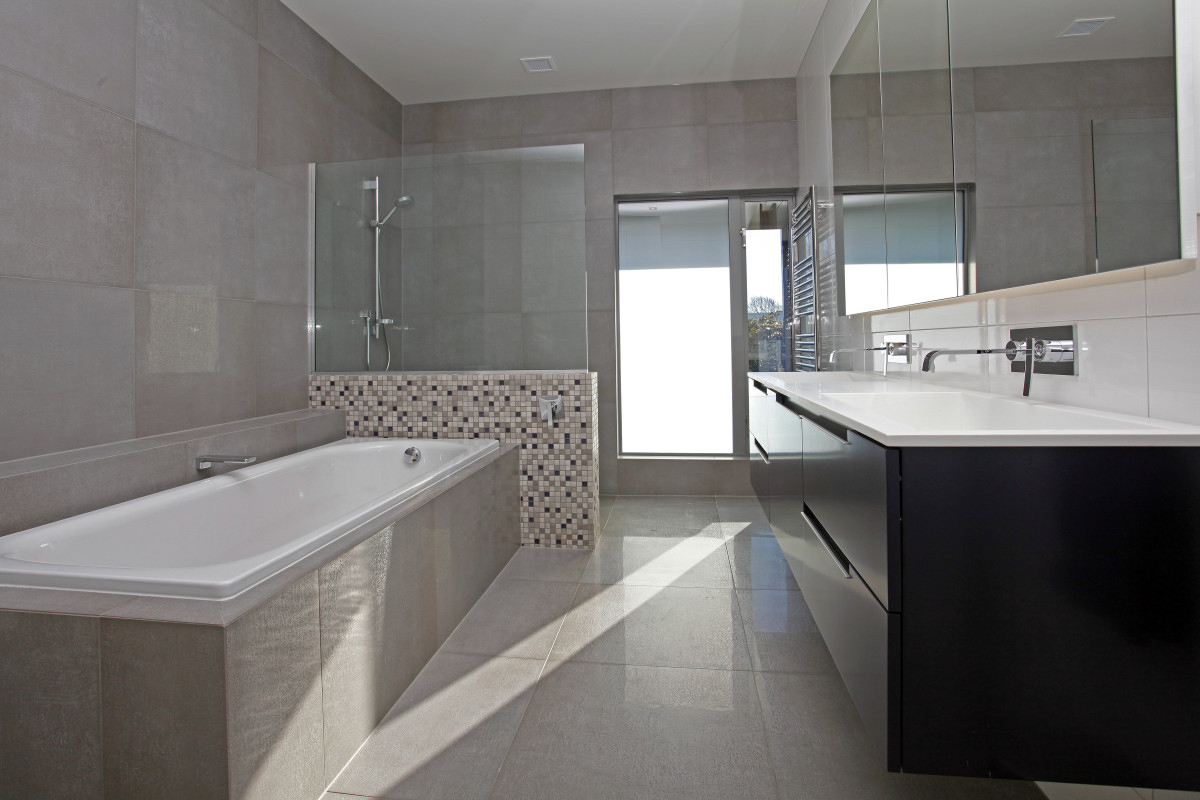Wet area suspended floors
13 Dec 2013, Prove Your Know How, Technical

The design, material selection and construction of wet area floors is critical to the performance of a building.
If the water in these areas is not contained, significant damage can occur to timber framing and wood or wood-based flooring. When selecting wood-based flooring for wet areas, the key requirement is durability.
Building Code and compliance documents
Building Code clause E3: Internal moisture performance requirements states that:
- Freewater from accidental overflow from sanitary fixtures or sanitary appliances must be disposed of in a way that avoids loss of amenity or damage to household units or other property (E3.3.2).
- Floor surfaces of any space containing sanitary fixtures or sanitary appliances must be impervious and easily cleaned (E3.3.3).
- Surfaces of building elements likely to be splashed or become contaminated in the course of the intended use of the building must be impervious and easily cleaned (E3.3.5).
- Surfaces of building elements likely to be splashed must be constructed in a way that prevents water splash from penetrating behind linings or into concealed spaces (E3.3.6).
Use the right impervious finish
Suitable impervious finishes listed in E3/AS1 that meet the above requirements for floors in splash zones are:
- Integrally waterproof sheet material (eg polyvinylchloride), with sealed joints.
- Ceramic or stone tiles with 6% maximum water absorption and waterproof grouted joints, bedded with an adhesive specified by the tile manufacturer as being suitable for the tiles, substrate material and environment of use.
“When selecting wood-based flooring for wet areas, the key requirement is durability
- Cement-based solid plaster or concrete, with a steel trowel or polished finish (semi-gloss or gloss paint must be used if a paint finish is required).
- Cork tile or sheet sealed with waterproof coatings and sealed joints.
- Monolithic coatings, with a polished non-absorbent finish (eg terrazzo).
- A timber or timber-based product, such as particleboard sealed with waterproof coatings
Shower areas
Shower areas present a higher risk, so the requirements in E3/AS1 are different:
- Ceramic or stone tile finishes must be laid on a continuous impervious substrate or membrane.
- The use of cork tile or sheet sealed with waterproof and applied coatings, and sheet linings finished with vinyl-coated wallpaper or semi-gloss or gloss coating, are excluded.
- NZS 3604 Section 4: Durability has, in clause 4.3.4, the requirement that wood-based building components in wet areas such as bathrooms, kitchens, laundries and toilets be protected by an impervious finish or a lining with sealed joints.
- Amendment 7 to NZBC Acceptable Solution B2/AS1 modifies sections 109 and 110 of NZS 3602, where maintenance of an impervious finish cannot be assured for plywood and timber flooring.
Wood-based flooring for wet areas
While there are various documents that provide guidance on the type of treatment required when forming a suspended framed floor platform in wet areas, none provide concise advice for all options.
Wood-based wet flooring options are:
- BRANZ-appraised H3.1-treated reconstituted woodboard.
- B2/AS1 amendment to NZS 3602, which requires H3-treated plywood or H1.2-treated solid radiata pine or Douglas fir.
- Other timber species such as matai or rimu in accordance with Table 1 (1C3) of NZS 3602.
Repair the right way
BRANZ has published a full set of publications as part of its Good Repair Guide series:
- Damp Subfloors
- Repainting Textured Finishes
- Horizontal Timber Weatherboards
- Interior Painting
- Timber Windows
Additional titles will be coming soon.
The series explains the causes of the most common problems in New Zealand houses and provides the building professional with blow-by-blow descriptions of how to repair them.
Packed with numerous drawings and photos, these guides give practical, hands-on advice for dealing with a wide range of repair issues.
Books are available for purchase for only $20.95 each + $3 p&p. They can be ordered online www.branz.co.nz or call 0800 80 80 85.
For more information on the Good Repair Guide series go to www.branz.co.nz.
Register to earn LBP Points Sign in



